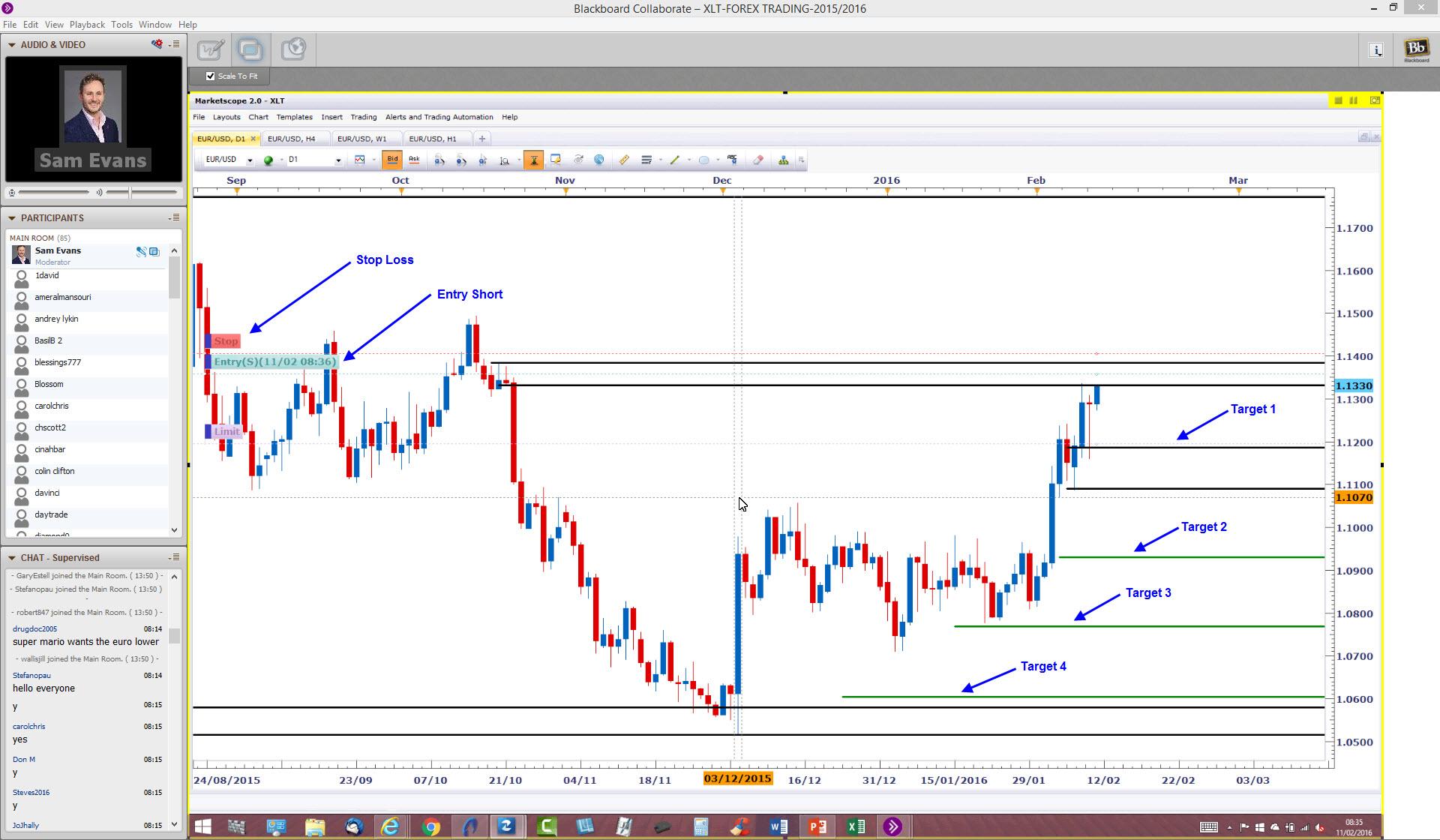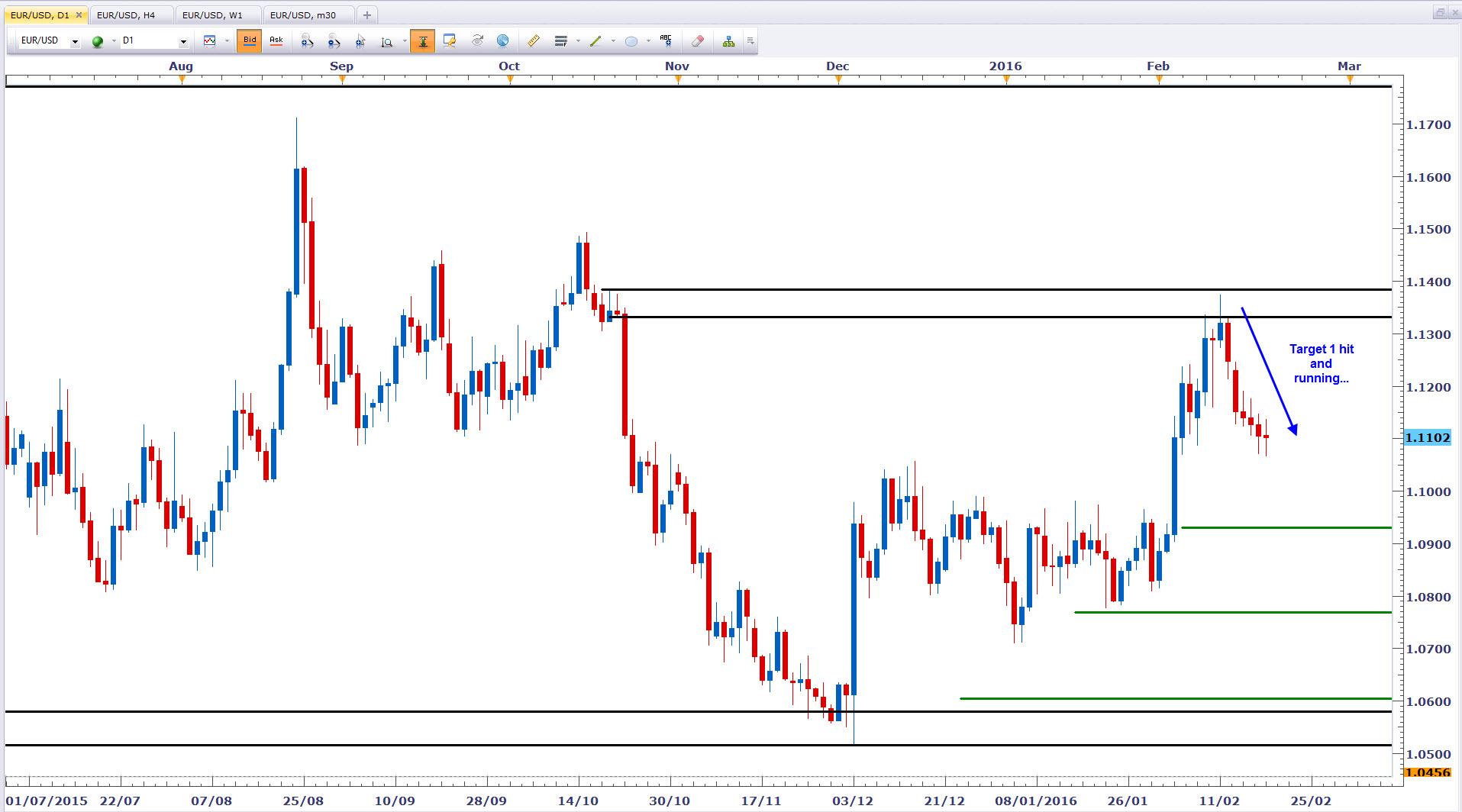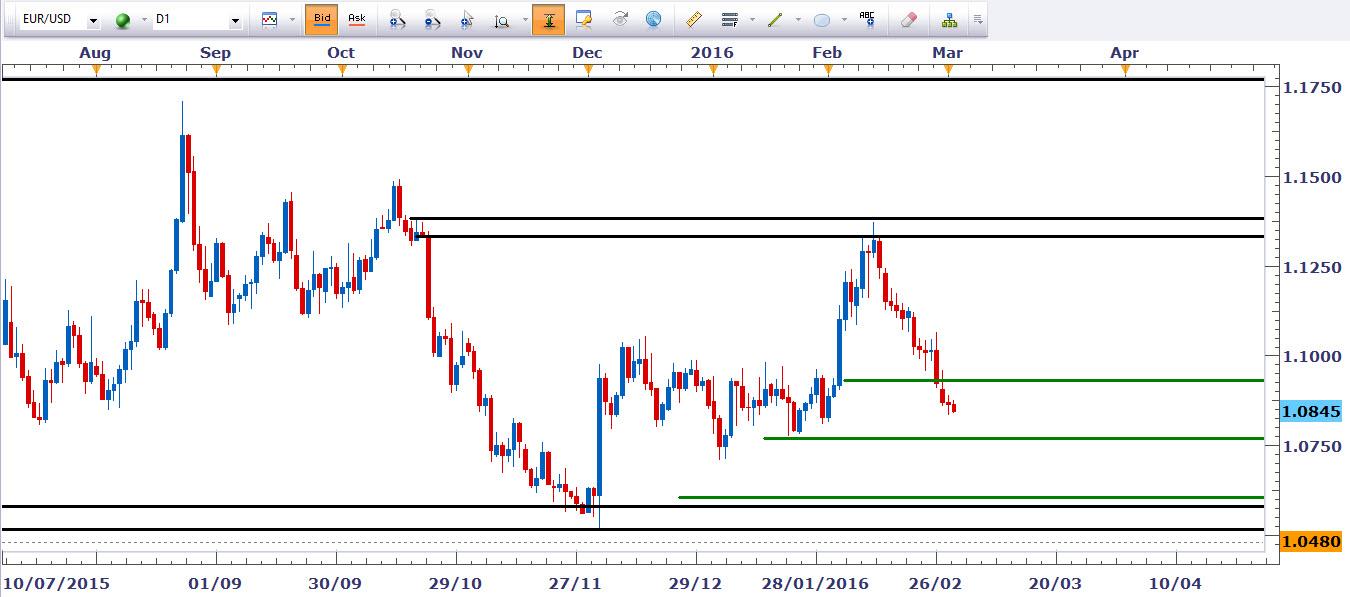![]()
This week I would like to continue our look into the various methods of profit taking that we started two weeks ago with a discussion on steps to take after your trade starts showing profits.
As we talked about last time, taking a small loss on a trade can be easy as it is generally over quickly (when you use a stop-loss order) and we can move on to the next opportunity. However, students I work with often struggle with what do when they are in a profitable trade and need to manage it to its full capacity. Let’s face it, nobody ever wants to close out a winning trade when it is doing well, because winning feels good and you want to make as much as you can when the market is on your side. Then again, we don’t want to give back a solid profit and end up walking away from a winning trade when it turns back into a losing one either, or maybe just wind up breaking even. The simple solution to deal with our profit taking demons is to have a plan before you take the trade that details strategies for various outcomes as the trade develops. Making your mind up what to do when the trade is already underway is the worst thing to do as there will be far too many emotions involved. So as I say, we plan out what we are going to do before the market actually does it.
Now I will explore 3 different ways to take profits and the various implications of each. You may remember, in the last piece we looked at a trade setup that was planned in our live XLT Forex program, a short on the EURUSD with multiple targets. The setup looked like this when it was planned:
At the point of publishing the first article, the EURUSD had already fallen to our first target where it was stalling a little before making up its mind where to move to next. It looked like this:
Here are 3 different profit-taking scenarios. There is no right one to use, but rather each offers different outcomes depending on the individual’s trading style and temperament.
All In All Out
For some traders, the first target of 1.1105 offered a more than acceptable profit, when the original short on the pair was executed at the above supply zone in the region of 1.1362, allowing much more than a basic 3:1 reward to risk ratio. This option would have meant that we would have entered into the trade with our maximum position size at the level of supply and then exited the full amount allowing no other profit taking later at the lower level of demand. This method gives a healthy profit. However, due to no partial profits being taken it does require more mental solidarity because you either win or lose with nothing in between, which some newer traders can find challenging at first.
Scaling Out
The method of scaling out involves more than one profit target as the trader takes partial profits along the way as the trade moves further in the direction of profitability. Revisiting the above trading opportunity found in the XLT, you will see from the screenshot that I had drawn a total of 4 targets. After hitting the first target at demand, the EURUSD did in fact continue to the downside reaching more targets as you can see below:
Target number 2 was hit a few weeks later as the pair fell further, to as low as almost 1.0800, almost 200 pips more. Now of course, we could have still done an all in all out method but it would have been frustrating if the pair had reversed at the first target. Scaling out overcomes this by allowing us to take some profit off the table by closing out a portion of the trade at each subsequent target. For example, we could have taken off half of our trade at target one and moved the stop to breakeven, leaving us with a worst case scenario in which we are guaranteed to have made money and with zero risk on the remainder of the trade even if it retraces back to our original entry. This way we can allow the trade to continue to run with breathing space.
The only downside to this: you will never achieve the most powerful risk to reward ratios and will always compromise your profits because you are taking amounts off the table early and then leaving some to run. What you end up leaving running is a smaller amount of the original trade position which means you always make less money as it runs than you would have if the trade was still in its full size. It is easier on the emotions as it satisfies the need for profits and, as the risk is reduced early, the newer trader is more likely to allow the rest to run which gets them used to holding on for bigger moves as their skills develop over time.
Scaling In
This technique is by far the most profitable but is also the toughest on the emotions and is to be used by only experienced traders who already have a solid plan in place and a proven methodology. It involves adding to your original position you took at entry, only as the market moves in your direction of profitably. The result, if the trade is working out for you, is basically massive profits and by far the largest risk to reward profiles of all three methods. However, the negative is that as you add to the trade your average entry price becomes less favourable due the fact that you are buying more as it goes up or selling more as it goes down. Should the trade go in the opposite direction, your breakeven point becomes nearer to where you added in the trade thus giving you less wiggle room for a pullback. You must always have a final target in mind if using this technique, otherwise you run the risk of having a trade move nicely in your favour only to watch it retrace on you a small amount for you to be back at a nearer and newer breakeven point. Of course if it works, you will multiply your profits in a big way. It takes time to get your head around that but with some experience it could be worth the consideration.
So there we have 3 ways of profit taking to consider. As I said before, no one way is better than another but they do each have very different outcomes if used in a rules-based manner alongside our solid Core Strategy. The choice really lies with the trader and their own individual comfort levels and attitude to risk. I hope you found this useful.
Note: All information on this page is subject to change. The use of this website constitutes acceptance of our user agreement. Please read our privacy policy and legal disclaimer. Opinions expressed at FXstreet.com are those of the individual authors and do not necessarily represent the opinion of FXstreet.com or its management. Risk Disclosure: Trading foreign exchange on margin carries a high level of risk, and may not be suitable for all investors. The high degree of leverage can work against you as well as for you. Before deciding to invest in foreign exchange you should carefully consider your investment objectives, level of experience, and risk appetite. The possibility exists that you could sustain a loss of some or all of your initial investment and therefore you should not invest money that you cannot afford to lose. You should be aware of all the risks associated with foreign exchange trading, and seek advice from an independent financial advisor if you have any doubts.
Editors’ Picks
US economy grows at an annual rate of 1.6% in Q1 – LIVE

The US' real GDP expanded at an annual rate of 1.6% in the first quarter, the US Bureau of Economic Analysis' first estimate showed on Thursday. This reading came in worse than the market expectation for a growth of 2.5%.
EUR/USD holds gains above 1.0700, as key US data loom

EUR/USD holds gains above 1.0700 in the European session on Thursday. Renewed US Dollar weakness offsets the risk-off market environment, supporting the pair ahead of the key US GDP and PCE inflation data.
GBP/USD extends recovery above 1.2500, awaits US GDP data

GBP/USD is catching a fresh bid wave, rising above 1.2500 in European trading on Thursday. The US Dollar resumes its corrective downside, as traders resort to repositioning ahead of the high-impact US advance GDP data for the first quarter.
Gold price edges higher amid weaker USD and softer risk tone, focus remains on US GDP

Gold price (XAU/USD) attracts some dip-buying in the vicinity of the $2,300 mark on Thursday and for now, seems to have snapped a three-day losing streak, though the upside potential seems limited.
XRP extends its decline, crypto experts comment on Ripple stablecoin and benefits for XRP Ledger

Ripple extends decline to $0.52 on Thursday, wipes out weekly gains. Crypto expert asks Ripple CTO how the stablecoin will benefit the XRP Ledger and native token XRP.
RECOMMENDED LESSONS
Making money in forex is easy if you know how the bankers trade!
Discover how to make money in forex is easy if you know how the bankers trade!
5 Forex News Events You Need To Know
In the fast moving world of currency markets, it is extremely important for new traders to know the list of important forex news...
Top 10 Chart Patterns Every Trader Should Know
Chart patterns are one of the most effective trading tools for a trader. They are pure price-action, and form on the basis of underlying buying and...
7 Ways to Avoid Forex Scams
The forex industry is recently seeing more and more scams. Here are 7 ways to avoid losing your money in such scams: Forex scams are becoming frequent. Michael Greenberg reports on luxurious expenses, including a submarine bought from the money taken from forex traders. Here’s another report of a forex fraud. So, how can we avoid falling in such forex scams?
What Are the 10 Fatal Mistakes Traders Make
Trading is exciting. Trading is hard. Trading is extremely hard. Some say that it takes more than 10,000 hours to master. Others believe that trading is the way to quick riches. They might be both wrong. What is important to know that no matter how experienced you are, mistakes will be part of the trading process.



